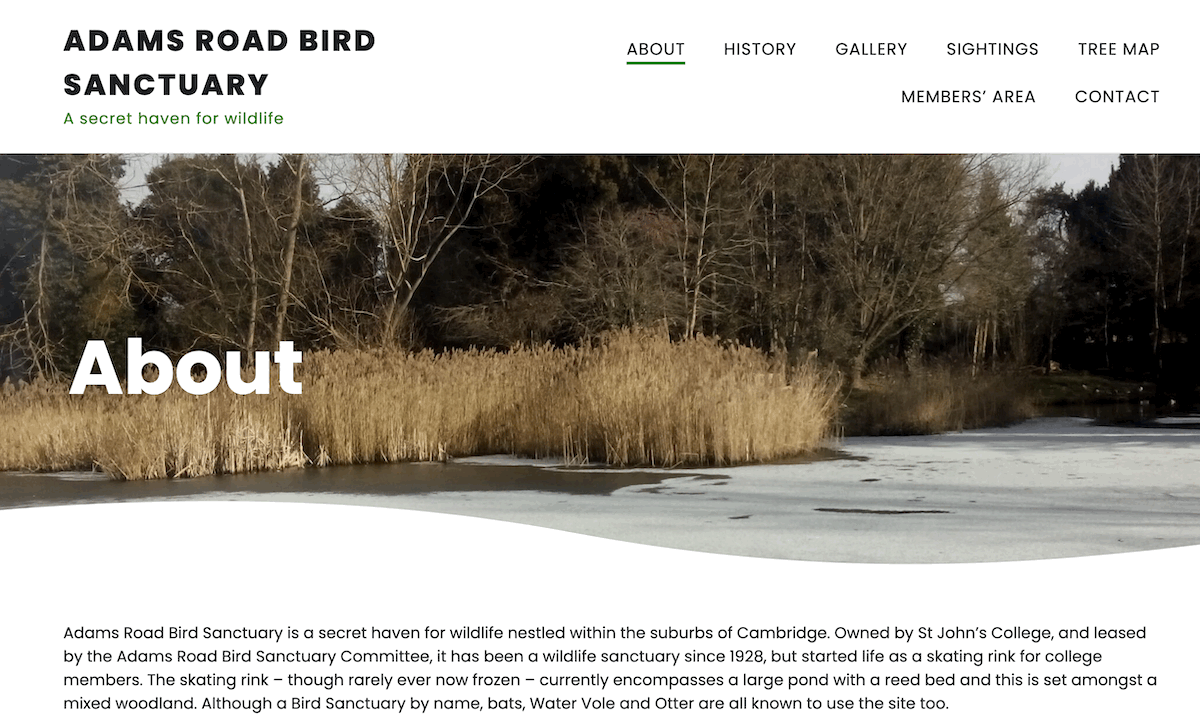Imagine purchasing a new home, only to find that you are significantly restricted in how you can use your garden at night, or that you cannot alter windows for better ventilation. Plans to protect light-sensitive bats would have put residents of a new home proposed for Adams Road in Cambridge in this situation, and so the planning inspector dismissed an appeal against the Planning Committee’s refusal of the application.
Last week I heard that an appeal against a planning decision made by the Cambridge Planning Committee had been dismissed, and I want to explain why I think this was the correct decision and why it might help us preserve wildlife in future.
The story is a bit complicated, as there have been two planning applications, two refusals at the planning committee, and two appeals which were dismissed, but the essence of the issue is that an application was made to build a house close to the Adams Road Sanctuary, which is a County Wildlife Site and haven for birds, bats and amphibians.
After an original proposal to demolish 18 Adams Road and build two new houses was refused, the owners submitted an application to build a new dwelling in the rear garden. Although the city council officers who assessed the application recommended its approval the planning committee, including me, voted to refuse it and this refusal has now been upheld at appeal.
The large back gardens of Adams Road and other streets provide supporting habitat for the animals, and the new house would have taken an estimated 10% of the space available within 30m of the sanctuary, so the second application added a landscaped ‘buffer’ between the end of the garden to the new house and sanctuary.
In addition, a new survey showed that there were nine different species of bat including a rare light sensitive species in the area, and so the application added a proposed lighting scheme to protect the bats to ensure dark, unlit corridors at all times to the north boundary of the site.
This specified no operable windows or doors on the north side except a back door. Windows would all be tinted, and internal lighting designed so that the entire north, west and eastern boundaries of the new garden would remain in complete darkness. If this was achieved then the new house would be in compliance with best practice guidance on bats and artificial lighting at night.
This sounds fine, but it is not a real solution as is does not deal with any future changes, perhaps when the house was occupied by new residents. In this way it conflicted with Policy 57 on the local plan, “Designing New Buildings”, which requires buildings to be easily adaptable and convenient, safe and accessible.
The inspector highlighted this issue stating “Whilst the proposed lighting strategy might be agreeable to the appellant, the range and extent of limitations could affect the reasonable enjoyment of the sizeable dwelling proposed, which would be unrealistic in the medium to longer term, including for different occupiers in the future.” The inspector gave the examples of future occupiers wanting to use some lighting in the gardens at night, or to replace the large fixed glazing facing the north garden, changed windows to be openable, or installing lighting for security reasons.
The inspector pointed out that imposing such limitations through planning conditions would be “unreasonable” and would compromise how future occupants could “normally expect to occupy their home.”
What this means is that some land which is near important nature, where there is evidence of endangered birds, amphibians, or mammals (bats) should not be built on if the proposed conditions would compromise how a good home can be used.
And for me as a member of the planning committee it means that when considering developments near sensitive ecological areas, we must carefully weigh the potential impacts and consider whether mitigation measures are truly sustainable and enforceable. Relying on conditions that restrict the reasonable enjoyment of a home for future owners is unlikely to be a viable long-term solution.
As the inspector said: “It would be unreasonable to control such measures which would compromise how occupiers could normally expect to occupy their home, by way of planning condition.”
Protecting our natural environment requires robust planning policies and careful consideration of the long-term implications of development, but it has shown the limitations of using planning conditions to micro-manage the lives of future homeowners.
You can read the full documentation of the application, the initial decision, and the appeal on the Planning Portal.
